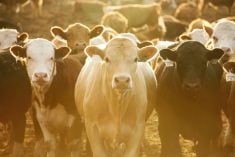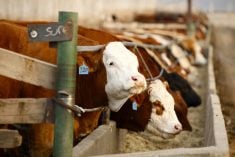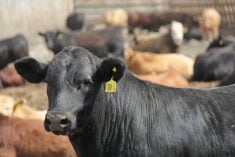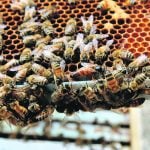Western Canadian feeder cattle markets experienced a softer tone over the past week as many auction barns are in summer holiday mode. Weakness in live and feeder cattle futures set a negative tone and by Friday, Alberta packers had dropped bids by nearly $12 on a dressed basis. Feedlot operators were once again on the defensive realizing that this volatile ride over the winter is not over. Many operations are liquidating high-priced fall-placed calves and the full extent of the losses is coming to fruition.
Looking forward, talk in the industry reflects that feedlot operators are pricing feeder cattle based on a fed cattle price of $142 for the fall period which is about $15 below current levels. This suggests feeder cattle prices will struggle to maintain any strength over the next couple of months. U.S. feeder cattle values were also trading $10 below week-ago levels.
Read Also

U.S. grains: Soy futures post biggest monthly gain in nearly five years on China trade optimism
U.S. soybean futures climbed to a 15-month high and posted their biggest monthly gain in nearly five years on Friday following a rally fueled by the prospect of revived exports to China.
Higher-quality 800-lb. steers’ average prices were in the range of $184-$186 across the Prairies but certain markets reflected a $10 variation on either side. Southern Alberta appeared to have the weakest markets, which weighed on all other sales in Western Canada. Lighter weight categories were extremely variable; mixed steers averaging 700 lbs. in central Alberta traded at $207 while in Manitoba, similar cattle were quoted at $195. Calves were generally $10 weaker in the eastern Prairie markets compared to central and northern Alberta. Major buyers from the U.S. sat on their hands this week which may have contributed to the weaker sentiment in these regions.
U.S. third-quarter beef production is projected to reach 6.455 billion lbs. This is up about 400 million from the second quarter and up 300 from the same time last year. Until we get over this hump, I don’t think producers can count on the market sustaining any upside. Keep in mind the third quarter is a period of seasonal low demand. While second-quarter consumption levels have maintained beef wholesale prices, this will not continue in the third quarter.
I’ve also spoken with many producers and said that in the current environment, the futures market will lead the cash market lower. The futures market is trading the future and we need to see production to come in lower than expected in order for the market to reverse course.
— Jerry Klassen is manager of the Canadian office for Swiss-based grain trader GAP SA Grains and Produits. He is also president and founder of Resilient Capital, which specializes in proprietary commodity futures trading and commodity market analysis. Jerry owns farmland in Manitoba and Saskatchewan but grew up on a mixed farm/feedlot operation in southern Alberta, which keeps him close to the grassroots level of grain and cattle production. Jerry is a graduate of the University of Alberta. He can be reached at 204-504-8339.












